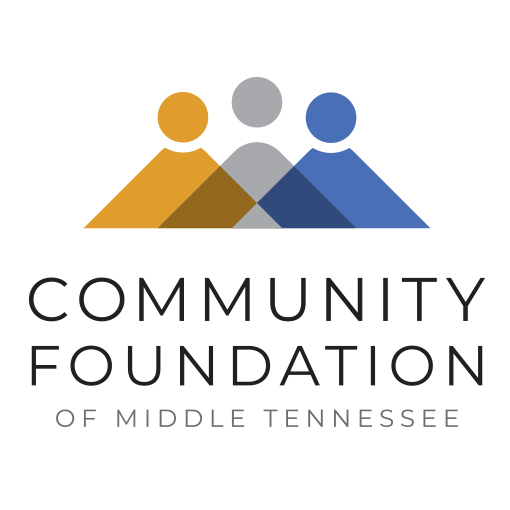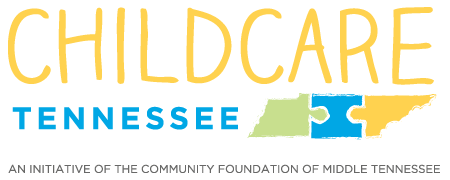Find CFMT’s March 2020 Tornado Response Updates & Grantees at www.TornadoResponse.com.
March 2020 Nashville Tornado Survivor Counts Blessings in Affordable Housing
When the one-year anniversary of Nashville’s March 2020 tornado arrived, tornado survivor Reba Gibson wasn’t celebrating her recovery.
She was still in temporary housing.
Gibson’s experience isn’t unique. According to the Center for Disaster Philanthropy, “Damage and loss may be immediate, but the impact will last for a long time and usually requires years of recovery.”
Those working in disaster recovery often feel the mismatch between public perception and reality. Amy Fair, Vice President of Donor Services at The Community Foundation of Middle Tennessee, explained, “There are expectations now more than ever for the work to happen instantly, the money to be distributed at once, and the problems to be solved overnight.
“I am not sure it will ever be fast enough for anyone.”
That’s not the case for Gibson, who says she didn’t expect a fast recovery. “It takes time. It’s nothing that’s going to happen overnight. But if you get someone who cares, you will get help,” she said from her new Nashville townhouse.
For Gibson, that someone who cared was her case manager, assigned to her as part of the services provided by the Davidson County Long-Term Recovery Group formed in response to the 2020 Tornado.
In Nashville, as in many areas of the United States, a Voluntary Organizations Active in Disaster group — better known by its acronym VOAD — is formed of local organizations to be prepared to respond in case of a disaster. Coincidentally, the Nashville VOAD was at the very beginning stages of reconvening just days before the tornado that destroyed the North Nashville house in which Gibson rented a room.
When a disaster strikes, the VOAD forms a Long-Term Recovery Group — LTRG for short — to specifically respond to that disaster.
In the last couple of years, the VOAD has formed such long-term groups to deal with disasters, including the March 2020 tornado, the Christmas Day 2020 bombing, and March 2021 floods. The LTRGs are made up of representatives from nonprofit organizations, faith-based groups, government agencies, and others.

Reba Gibson, survivor of the March 2020 Nashville Tornado, stands outside her new townhome with the T-shirt her sister made her in remembrance of the second anniversary of the tornado. The T-shirt reads “Nashville Strong” on the front and “Reba Survived the Tornado of 2020” on the back.
While renters often can be resettled more quickly than homeowners who need to rebuild, Gibson’s recovery was slowed by two co-occurring crises: Nashville’s affordable housing crisis and the COVID-19 pandemic.
Recounting the night of the tornado, Gibson says she hid under the bed as she saw the tornado through her window.
“When I opened the door, my house was gone. It was destroyed,” she said.
“I had wanted to move anyway,” Gibson continued, “and when I got out on the porch it was like something … it was the Lord. He said, ‘You wanted a better place. I let you live. And you’re going to get a better place.’”
She slept on her son’s couch for months in an apartment where a college-age grandchild had come home due to pandemic school closures, and her other grandchildren were also home-schooling virtually because of the pandemic.
When a waitlist for services exists, as has been the case in recent Nashville disasters that include the March 2020 tornado and March 2021 floods, LTRG organizations assess for risk, prioritizing those with the most need who are unlikely to recover on their own.
Gibson was on the waitlist before she was assigned a case manager. She said the waiting was bearable because, “I knew [help] was coming.”
“When I got that call, I was shouting at work,” she said, recalling the first phone call she received from her case manager, in the final weeks of working before she was laid off due to the pandemic.
While Gibson emphasized the importance of the help of the LTRG in her tornado recovery, she also emphasized the work the survivor must do to make long-term recovery a reality.
“It was like a job,” Gibson said.
She followed up on every lead from her case manager and asked everyone she encountered about affordable housing options. Eventually, this paid off: About 14 months after the tornado, Gibson moved into a permanent home — an affordable housing unit.
Her case manager worked with the LTRG organizations to get any additional furniture for Gibson that her friends hadn’t already donated. Now, more than two years later, she is settled into her home.
CFMT's TWO-YEAR TORNADO REPORT TO COMMUNITY
Still, on this particular afternoon recently, severe weather with the possibility of tornadoes was approaching Nashville. Gibson kept the TV on in the background, just in case.
The emotional recovery is often the last piece. Rebuilding a house may be slow, especially with recent lumber shortages, price increases, and supply chain issues in a rapidly growing city where contractors are often booked up well before disaster strikes.
But the disasters live in the memory long after the rebuilding and replacing are done.
“You don’t forget it, but, you know, I think I took it better [the first year] than this year,” Gibson said of the two-year anniversary.
This year, she couldn’t sleep. And she cried remembering awful night.
But she also celebrated her progress toward recovery. Her sister had a T-shirt made for her that reads “Nashville Strong” on the front and “Reba Survived the Tornado of 2020” on the back.
Remembering that second anniversary, Gibson said, “I was like, well, God, thank you I’m still alive.”
One of the goals of the LTRG is to make sure that survivors are more resilient when they recover so they can withstand a subsequent disaster more easily. For many, this can be in the form of helping the client obtain homeowner and flood insurance.
Even those with insurance often have a long road to recovery.
According to surveys done by United Policy Holders, a consumer advocacy organization, it is common for those with insurance to still be working on settling with their insurance companies two years after a disaster. As many as 33 to 47 percent of disaster survivors are still without an insurance settlement at the two-year mark.
Said The Community Foundation’s Fair: “I think all of us involved in disaster recovery continue to emphasize the long-term aspect of it by saying it is a marathon and not a sprint.”
Story by Indie Pereira
Learn More About Nashville VOAD
Read: Two Years After Tornadoes, Nashville Woman Counts Blessings as Rebuilt Home Awaits Completion






